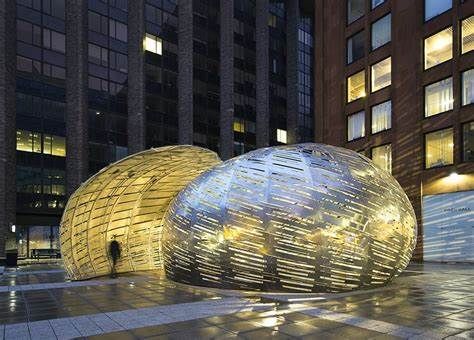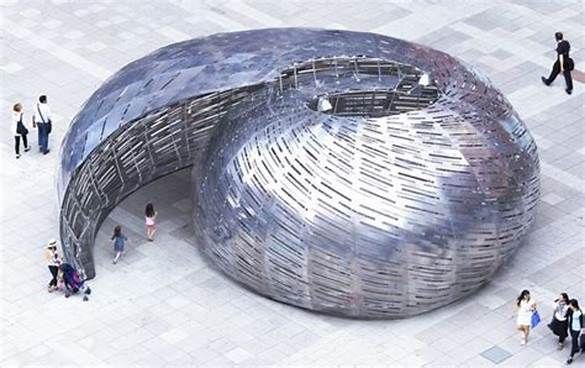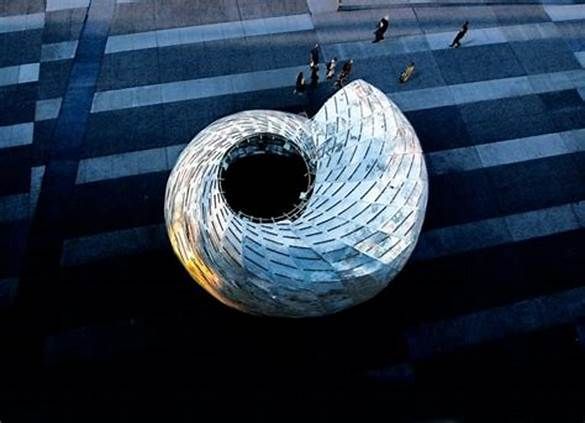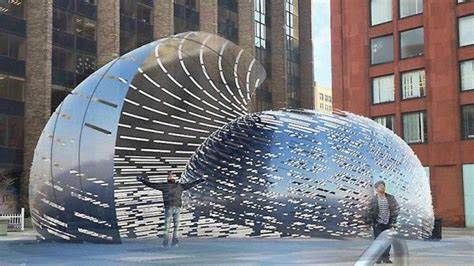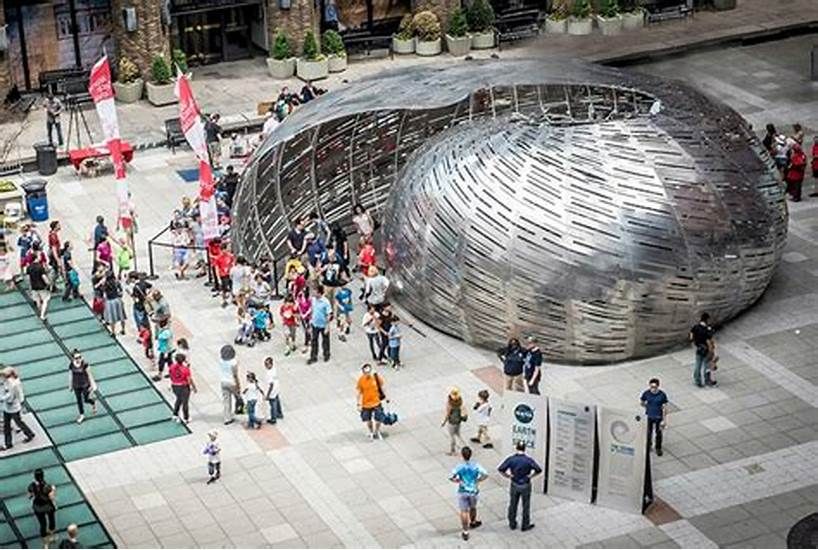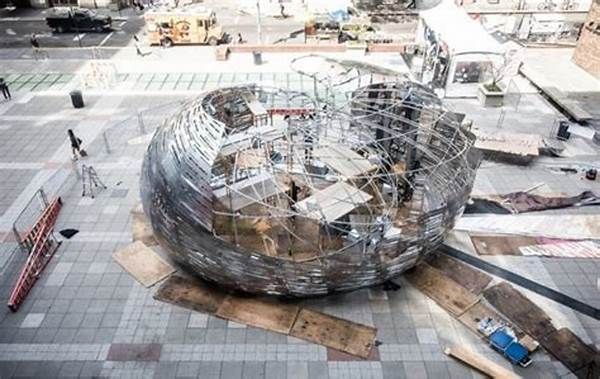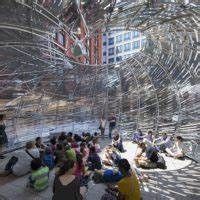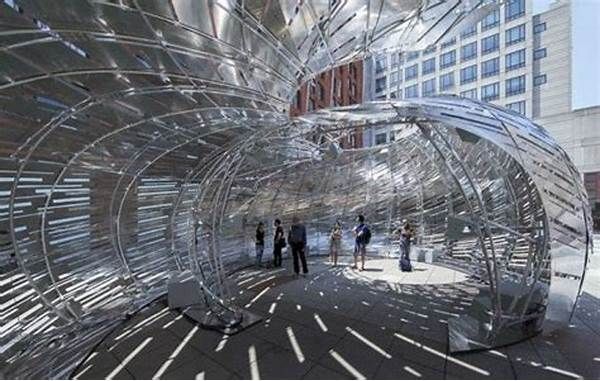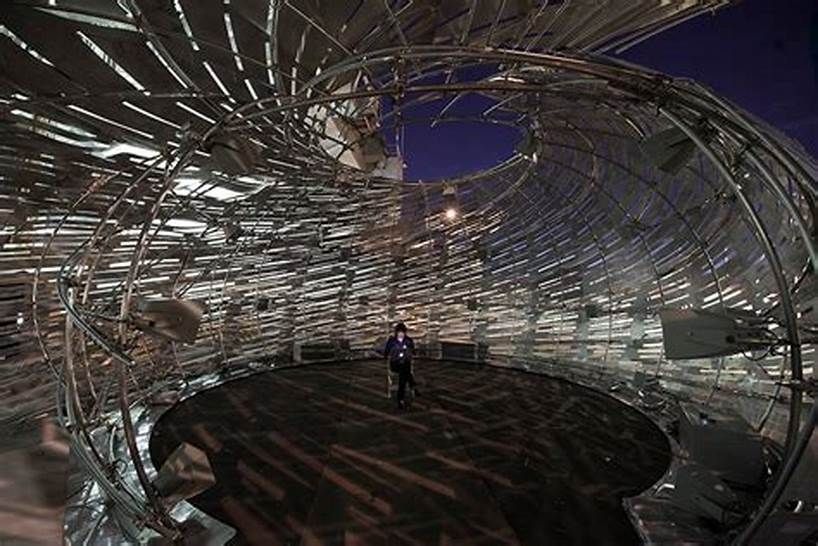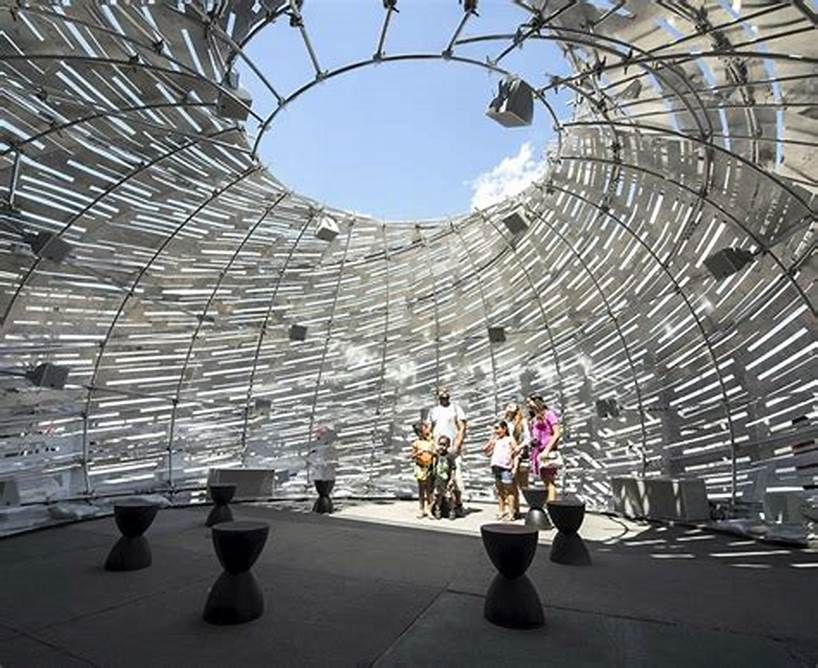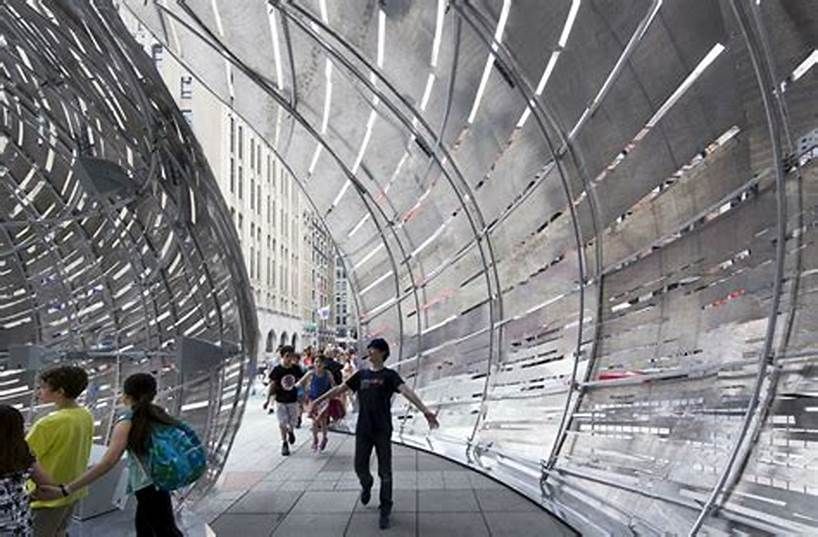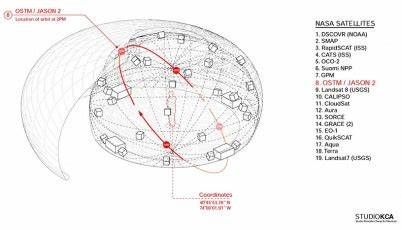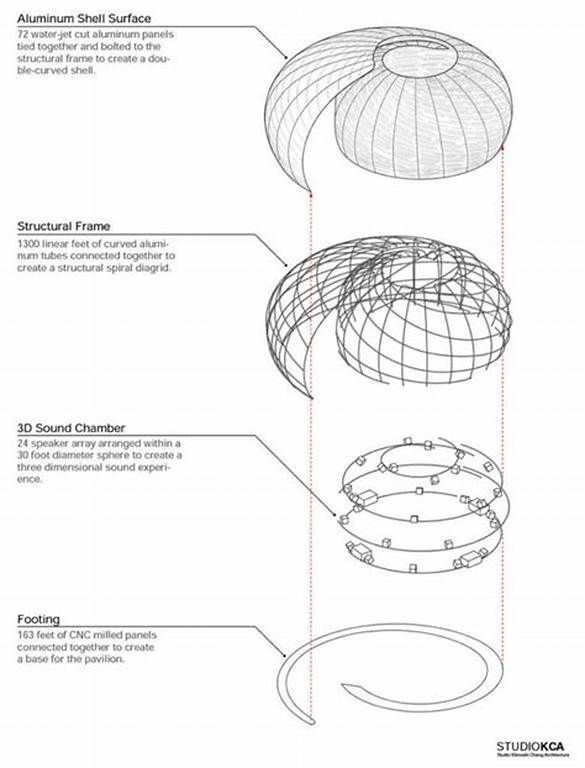LISTEN CAREFULLY | StudioKCA
“What if you could walk into a massive shell and listen to the sounds of space – or rather, a symphony built out of the sounds of satellites in space?”
-StudioKCA
You read it right!
NASA (National Aeronautics and Space Administration) has officially commissioned StudioKCA – Klimoski Chang Architects – to craft an installation that resembles a shell for hearing the cosmic sounds of satellites, stationed in the orbits.
And they designed one!!
The ‘Orbit Pavilion’ is designed as a wandering exhibition to focus on the undetectable sounds and trajectories of 19 NASA satellites orbiting the Planet Earth. Inspired by our childhood memories of listening to sea shells while strolling along the beach, StudioKCA created a chasmal nautilus structure using 3,500 square feet of Water-Jet cut Aluminum panels etched with over 100 orbital paths, built in together, and anchored to a curved framework of aluminium tubes. The edifice showcases a 30 feet diameter inner space with a large oculus at its core. An assortment of 24 speakers automated by artist and composer Shane Myrbeck from Arup, were employed to record, transform and broadcast the sounds of the satellites.
StudioKCA created a 3D sound chamber where visitors move in and actually listen to sounds of NASA satellites as they hover over, below and around them, in real time.
The surface holes perforated resonate the orbital paths, culminating in the centre of the sound chamber, while helping to alleviate external noise and reduce wind load on the light structure. This masterpiece of NASA, the Orbit Pavilion had its unveiling in New York City at the World Science Festival and is currently accommodated at the space agency’s’ Jet Propulsion Laboratory in Pasadena, California.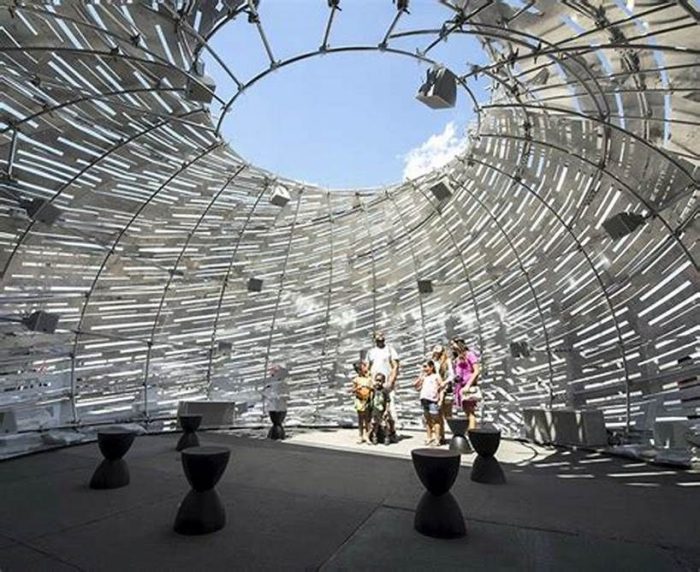
The large metallic body of the pavilion, curving into the form of a shell reminds us constantly of the immensity of space. Even though the scale seems small in figures, its monumental on the inside, especially engraved with numerous orbital conduits. Created as double-curved shell, it consists of 1300 linear feet of curved aluminium tubes, forming a structural Spiral Diagrid. The Spiral Diagrid is one of the most stable forms of structure with equal release of tension and compression. It is primarily tied with the footing of the structure, and is used to hold curved glazing and cases such as this one. This co-operates with the core, providing stiffness. NASA also studies the Earth. Since sound can’t travel in space, the satellites don’t in reality make any noises. But the creators wanted to represent the movement of the satellites with sound, rather than visuals, and offer an alternative way of wrapping your head around the NASA Earth satellites. “We like to call it ‘sneaking up on learning,'” said David Delgado, an artist, designer and educator at NASA’s Jet Propulsion Laboratory who worked on the Orbit Pavilion. “We plant the seeds of curiosity with people, and when they leave they want to know more.”
STUDIOKCA is known to approach each project holistically, working to create environments that feel simple, connected and complete. Whether they are designing a residence, a commercial space, an art installation, or a light, they strive to tell a story and create a sense of place that resonates with the end user and the local environment in order to create thoughtful and thought provoking objects and spaces. This mesh of a diagrid metal system does not take the load at awkward angles and instead focuses on tight bracing towards the core and deviating from the rectilinear shape.The structure is not symmetrical, yet it visually defines a well-balanced and dynamic form that invites its visitors within.
This is undoubtedly a stepping-stone is the field of Design and Architecture and Engineering, and we are blown away.
What do you think?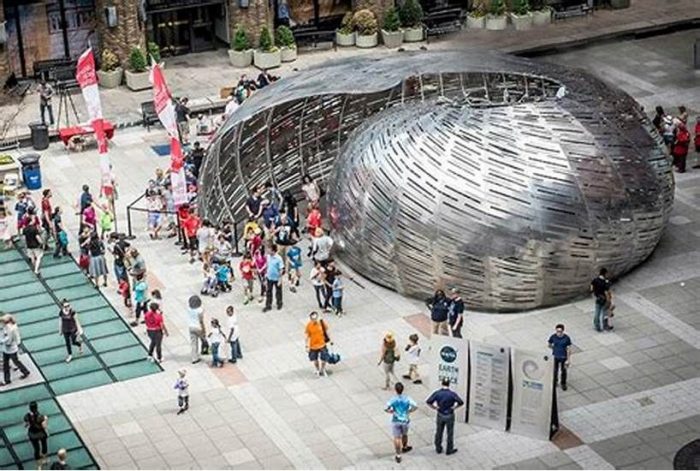
By: Ekshika
